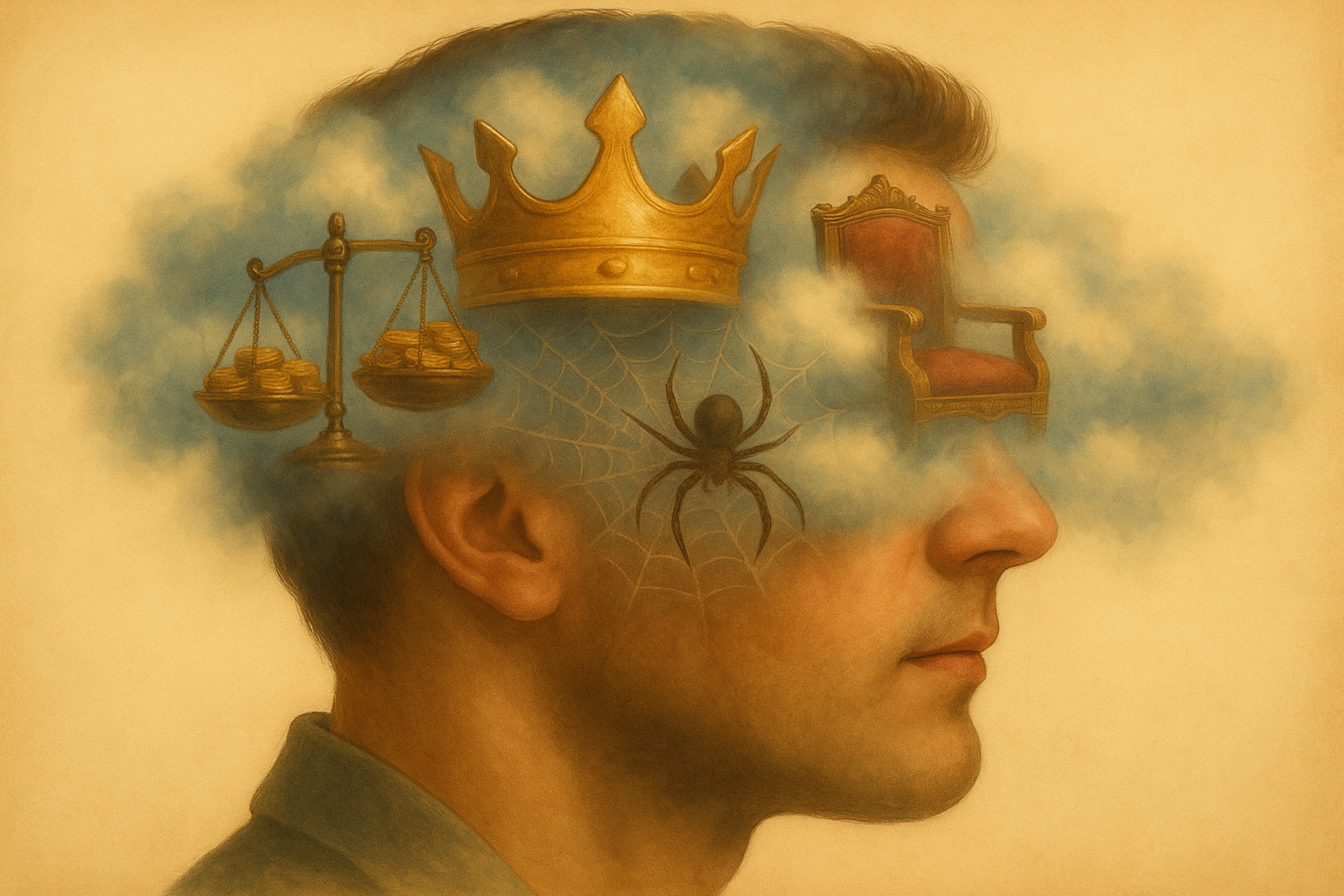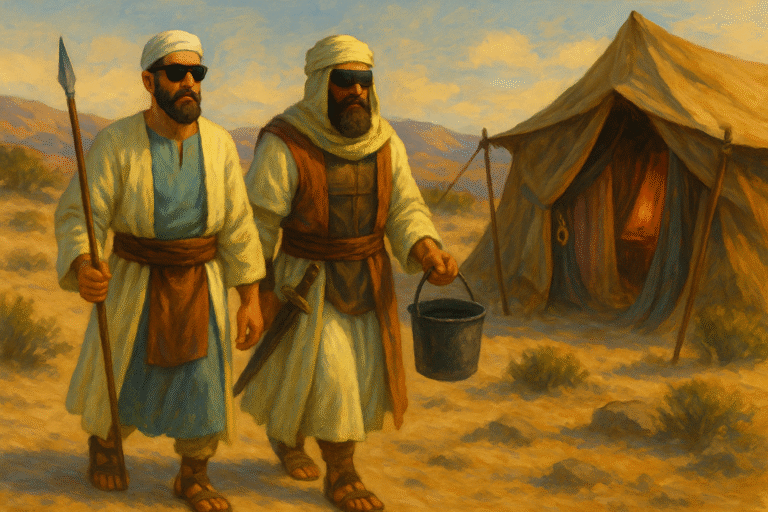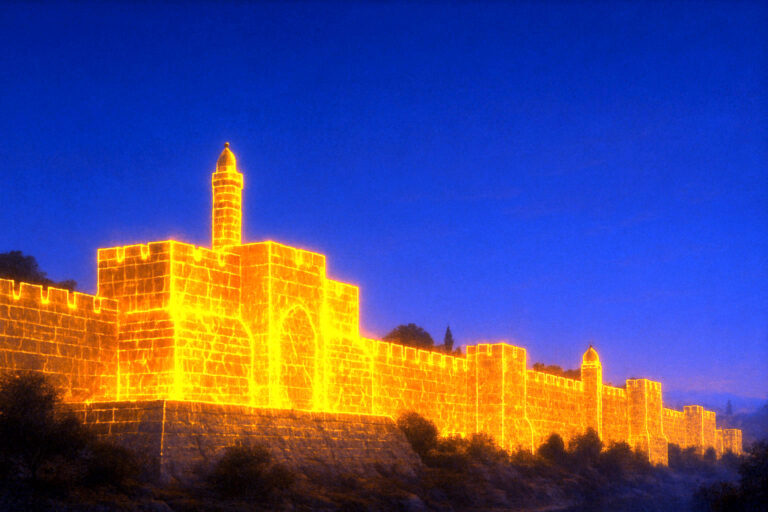Harnessing the Power of Imagination

Restoring Memory Through the Light of Holy Vision
Parashat Re'eh opens with these powerful words (Devarim 11:26): רְאֵה אָנֹכִי נֹתֵן לִפְנֵיכֶם הַיּוֹם בְּרָכָה וּקְלָלָה (See, I set before you today a blessing and a curse). With that single word—see—the Torah sets the tone for the entire parashah. Everything that follows, from the laws of proper worship to the rules of giving tzedakah, from testing a prophet to the joy of the festivals, everything depends on this first command: See.
But what does it mean to see? On the surface, it sounds obvious. We have eyes—we can take in the world around us. Yet the Torah treats 'seeing' not as a passive act of perception but as an active spiritual discipline. We are not simply asked to register light and color—we are commanded to discern between blessing and curse, to see reality as it truly is.
However, our sight is not always trustworthy. We can misread what we see in the world. We can 'see' what we expect to see rather than what is truly there. We can be fooled by illusions, by our own inner projections. This is where R' Nachman of Breslov's teaching in Likutei Moharan 54 helps us to understand the inner mechanics of vision, memory, and imagination—and how these three spiritual forces interface to either lead us toward blessing or, chas v'shalom, away from it. Parashat Re'eh begins by saying: 'See.' Likutei Moharan 54 explains how.
The first thing we need to realize is that in order to see properly, we need a good memory. A memory about what? R' Nachman explains (Likutei Moharan 54:1): וְעִקַּר הַזִּכָּרוֹן הוּא לִזְכֹּר תָּמִיד בְּעָלְמָא דְּאָתֵי, שֶׁלֹּא יִהְיֶה בְּדַעְתּוֹ, חַס וְשָׁלוֹם, שֶׁאֵין עוֹלָם אֶלָּא אֶחָד (And the essence of the memory is to remember constantly Olam ha-Ba, so that it would never be in one's mind, chas v'shalom, that there is only one world [i.e. Olam ha-Zeh]). First and foremost, this is what we all need to work on, to fix Olam ha-Ba in our minds all the time. This is the essence of memory and this is what we must protect at all costs—כִּי צְרִיכִין לִשְׁמֹר מְאֹד אֶת הַזִּכָּרוֹן, שֶׁלֹּא יִפֹּל לְשִׁכְחָה, בְּחִינַת מִיתַת הַלֵּב (For we must guard the memory very much, so that it does not fall into forgetfulness—which is the aspect of death of the heart). Two important revelations emerge here: the essence of memory is rooted in Olam ha-Ba, and when we don't think of Olam ha-Ba constantly, we become forgetful.
Now what does this have to do with seeing? We tend to think of memory as something that is rooted in our brain, locked in our mind. But R' Nachman re-frames the very notion of memory entirely (Likutei Moharan 54:4): כִּי עִקַּר הַזִּכָּרוֹן תּוֹלֶה בָּעַיִן, בִּבְחִינַת (שמות י״ג:ט׳): וּלְזִכָּרוֹן בֵּין עֵינֶיךָ (For the essence of the memory depends on the eye, in the aspect of [Shemot 13:9]: 'And for a remembrance between your eyes'). In other words, what we choose to look at—and how we choose to look—shapes what stays alive in our consciousness. That's how memory, which in a very real sense resides in the mind, is directly linked to one's vision. Therefore, in order to protect and guard our memory, to make sure that we don't become forgetful, we need a good eye. We need to make sure that we don't damage our eyes—spiritually.
So what are we supposed to do? After all, we live, essentially immersed in Olam ha-Zeh. How can we arrange our lives in such a way that we don't drown in it?
The key is being close to what we are looking at. When we are near something and see it in a well-lit space, our perception is accurate with little distortion. But when we are far away or in darkness, the mind must 'fill in the gaps,' and without knowing the reality, it often guesses wrong. This is true not only in the physical sense, but even more so in the spiritual realm—when our gaze is separated from truth by the 'distance' of distraction or the 'darkness' of forgetfulness, that what we see no longer matches reality.
Picture a dimly lit street at night: we might think that someone is lurking in ambush, only to find out later that what we were looking at was only a strangely-shaped tree. Distance and darkness distort vision, and as R’ Nachman warns (Likutei Moharan 54:5): כִּי אֲפִלּוּ מִי שֶׁיֵּשׁ לוֹ רְאִיָּה יָפָה יָכוֹל לִטְעוֹת עַל־יְדֵי שֶׁרוֹאֶה מֵרָחוֹק, וְנִדְמֶה לוֹ לְהֵפֶךְ מִן הָאֱמֶת. עַל כֵּן צָרִיךְ שְׁמִירָה יְתֵרָה לָזֶה (For even someone that has good vision can make a mistake by looking at a distance, and it appears to him the opposite of the truth. Therefore, one needs more caution in this).
But isn’t imagination a gift—the source of poetry, art, and music? It is, when used in holiness. The danger comes when we take our focus off Olam ha-Ba, distancing ourselves from our true purpose. Then we walk in darkness, and the mind—hard-wired to abhor a vacuum—fills in the missing pieces with projections that can reverse reality, making blessing look like a curse, truth like falsehood, and light like darkness. This is why R’ Nachman teaches: וְצָרִיךְ לִשְׁמֹר אֶת הָעַיִן מִכֹּחַ הַמְדַמֶּה (And it is necessary to guard the eye from the power of imagination).
The power of imagination is not inherently problematic. It's just a tool that Hashem gave us to make the world a better place—provided that we apply it correctly. However, if we distance ourselves from Hashem—which is our choice—then the tool, which was intended for our benefit to facilitate creativity, becomes a means of confusion and ultimately a detriment. Therefore, the Torah commands us to 'see'—but we must understand that unguarded sight is no guarantee of truth. And when the power of imagination runs wild, disconnected from true reality, it hijacks or sabotages our memory, leading us to forgetfulness.
So if we realize upon a reflective and meditative self-assessment that our memory has faded and forgetfulness seems to have taken root in our lives, what can we do about it? R' Nachman teaches that regaining true sight, restoring memory, and breaking the negative power of a run-amok imagination requires two distinct yet complementary forces: contentment [הִסְתַּפְּקוּת, histapkut] and joy [שִּׂמְחָה, simchah].
Histapkut means being satisfied with only what is truly needed from this world, even when obtaining more is possible. Think of it as the guard of the soul’s vessel. In the words of R' Nachman (Likutei Moharan 54:2): כִּי צָרִיךְ הָאָדָם שֶׁיִּהְיֶה לוֹ הִסְתַּפְּקוּת, לְהִסְתַּפֵּק מִזֶּה הָעוֹלָם רַק בַּמֶּה שֶּׁצָּרִיךְ לוֹ בְּהֶכְרֵחִיּוּת מִזֶּה הָעוֹלָם (For a person needs to have histapkut—to be satisfied from this world only with that which he absolutely needs from this world).
This avodah—difficult as it may be—is not just a spiritual exercise; it has practical and measurable effects. By limiting our contact with this world, we limit the spiritual forces of tumah from drawing vitality from the side of kedushah. This, in turn, curbs their 'growth,' so to speak, and results in a more refined and purified world, not only for ourselves but for everyone else. However, when we over-engage in Olam ha-Zeh, we place ourselves—and all of Creation—in a spiritually dangerous position, for the klipot gain ascendancy. Histapkut, then, clears away excess so the vessel remains intact, uncluttered, and available for kedushah—for true spiritual vision.
Simchah, on the other hand, is the active, restorative force. It directly breaks the negative power of the imagination—the very faculty that distorts vision and causes forgetfulness. R' Nachman teaches that the imagination gains its strength from sadness and depression. Simchah shatters that grip. Therefore, when the heart is gladdened, the fog of imagination lifts, allowing a person to see truly and remember his ultimate purpose. As he explains (Likutei Moharan 54:7): כִּי עִקַּר הִתְגַּבְּרוּת הַמְדַמֶּה הוּא עַל־יְדֵי עַצְבוּת כִּי הַמְדַמֶּה הוּא בְּחִינַת עַצְבוּת רוּחַ (For the main strengthening of the imagination is through depression, for the imagination is an aspect of a depressed spirit). And as he goes on to explain, this destructive force of imagination can only be broken through simchah.
These two antidotes work in concert. Histapkut clears away what clouds our sight by protecting the vessel of the soul from contamination and overreach, starving the forces that distort reality. Simchah breaks the inner fog of imagination that blurs perception, restoring clarity of sight and the memory rooted in vision. Together, they guard and fill the soul’s vessel with kedushah and the light of Olam ha-Ba, enabling us to see the world as it truly is, to distinguish between a blessing and a curse, and to keep our eyes and hearts fixed on our true eternal purpose.
This is the work behind the Torah’s opening call in Parashat Re’eh: 'See, I set before you today a blessing and a curse.' Only with guarded vision, sustained memory, and a purified imagination can we truly fulfill that command.






